Let’s face it, not many of us got into this nonprofit business because we have a deep and abiding love for building and monitoring budgets. And yet, so much of our time in managing and leading programs and organizations revolves around building the budget and tracking performance against that budget.

Our Financial Leadership session for this week centers on tracking budget performance, and the accompanying template offers a quick way to dashboard performance for your stakeholders and quickly see variances (good and bad) between budget and actuals.
However, for this post, I want to step back and offer some quick tips for making the budget building process a little less painful and a little more useful:
- Remember what a budget is. Your budget is your plan for carrying out your organization’s mission – it is a reflection of your mission in financial terms. Any business model is simply a compilation of resources and activities matched in a way to meet a particular end. our budget is simply your recipe for how to allocate resources across your organization to accomplish your particular mission. As such…
- Start your budgeting process by telling your story. The budget process becomes much less painful when your leadership teams have a unified understanding and belief in the plan for the upcoming year. Start your budget process by simply discussing and agreeing on that plan using language that motivates and enlivens your team (probably without any numbers at all). Once the team is unified, clear, and excited about the mission path ahead…
- Translate that story into financial terms – using only expenses, first. Focus first on budgeting the resources needed to carry out the mission and minimize talk of revenues at the outset. By not discussing revenues first, you can empower your teams to set aside some of their fears or break out of a starvation mentality that may typically hold them back. Have them budget what they need to do the job you’ve hired them to do. Once that seems firm and clear, then…
- Develop realistic revenue assumptions and reduce risk with scenarios. This shouldn’t be the step where you, as the leader, crush everyone’s hopes and dreams with your “there is no way we can afford any of that” kind of talk. However, there does need to be a reconciliation between the resources budgeted on the expense side and a realistic projection of revenue. Where expenses and revenues don’t align, develop some alternative scenarios and triggers. For example, if your team is asking to budget for a piece of new equipment, you can build a scenario where that gets funded if grant funding comes through. Or, if you are discussing whether or not to expand a program/service, build a scenario that allows you to pinpoint where revenue needs to get in order for that program to expand. Not only do these scenarios serve to reduce the risk of overextending a program, they also build shared ownership among staff who can see and have a voice in how decisions are made and can even empower them to come up with creative solutions.
- Remember that your budget is simply a set of assumptions. Some of us might as well write our budgets on stone tablets for how abhorrent we are to amending them or allowing deviation from them. But the reality is that our budgets are nothing more than guesses and assumptions that we have developed (some more guess than others). As we track our actual performance against our budget over the course of the year, it is important to see where deviations are occurring and be quick to understand why and pivot in our plan as needed.
- Budget for your full program costs AND for adequate profit! Too often, we (knowingly and unknowingly) fail to budget the resources necessary to fully fund our mission. We may shrink our “overhead” costs to be more “efficient,” and we may starve our programs of necessary funding to be viewed more palatably by a funder or stakeholder. believe that all of us should be building budgets that change the conversation of “overhead” and better capture the true costs of each of our programs.
And I believe our budgets should be built toward a profit target that enables us to build adequate reserves, invest in the infrastructure we need, and look toward future growth.
Blog by MNA Director of Innovation, Adam Jespersen. LEARN MORE about our Financial Leadership Webinar Series.

